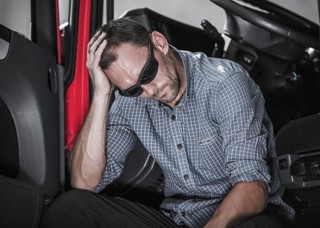British Cycling is calling for a change in the Highway Code to give cyclists heading straight on priority over drivers turning left.
The body has commissioned a report from a transport planning consultancy to investigate the move, but it has not been welcomed by several in the truck industry.
The report suggests that implementing the new rule could create an estimated 15% to 40% increase in signalised junction efficiency, reduce congestion and improve air quality.
It makes comparisons with safety levels seen on Dutch roads, where the risk of being killed whilst walking is 34% lower and the risk when cycling is halved, compared to in the UK.
Olympic cyclist Chris Boardman is leading the campaign. He said: “Whether driving, cycling or walking, negotiating a junction is the most hazardous manoeuvre you can make on the road – this is evidenced by the fact that nearly two thirds of motor vehicle collisions take place at junctions.
“There are at least 14 different rules in the Highway Code which relate to people walking and cycling at junctions, and it can be difficult for anyone to interpret what is the correct behaviour. A change needs to be made – the rules need to be simple and unambiguous.
The AA and RAC Foundation cautiously welcomed the move.
Edmund King, AA president, said: “It would be beneficial for all road users if the Highway Code simplified the rules at junctions where a disproportionate amount of injury crashes occur.”
Steve Gooding, director of the RAC Foundation, said: “We all need to recognise that the road is a shared space which works best when we all respect each other.
“The clearer we can make the rules of the road the easier it is for us all to see what’s expected of us and to comply. The rules also need to be complemented with the right streetscape engineering, with markings, surfaces and road geometry all telling us the same story.”
However the Road Haulage Association and Jacqueline O'Donovan, truck operator in London, spoke out against the proposal.
The RHA said: "While fully appreciating the concerns of the cycling lobby, the RHA is of the firm opinion that establishing a plan to improve safety for all road users can only be achieved by adopting a holistic approach that includes motorists, HGV operators, cyclists and pedestrians."
O'Donovan added: “While it sounds like a simple rule, it will actually cause huge confusion between drivers and cyclists when sharing the road, especially in the busiest cities where there are already pre-written and universally acknowledged rules in the Highway Code.
"Our industry, manufacturers and TfL have worked tirelessly over the last six years, investing in training and innovation to keep cyclists and pedestrians safer, which is evident from the reduction in collisions we are now seeing. Placing responsibility solely on the driver completely contradicts the message of collaboration and mutual education we have worked so hard to promote. Road safety will only improve when both parties learn to work together.
“The cyclist has full visibility of the driver’s movements when approaching from behind on the passenger side, meaning they are equally responsible.
“When it comes to the safety of vulnerable road users, this is a step in the wrong direction. I would urge cyclist and policy adviser Chris Boardman to spend a day at Exchanging Places with the Met & City Police, to see for himself the work being done by HGV operators to protect cyclists.”




















Doug - 09/12/2016 11:10
This makes no sense at all - it should be beholden on the cyclist, for his or her own safety, not to pass vehicles on their nearside, precisely because the vehicle could manouevre left and so enganger them. In no other circumstance would a vehicle approaching from the left have right of way on a UK road, changing this in this instance would only increase confusion. Will it cushion the blow on impact to a cyclist if, as he flies through the air, he does so in the knowledge that he had right of way?